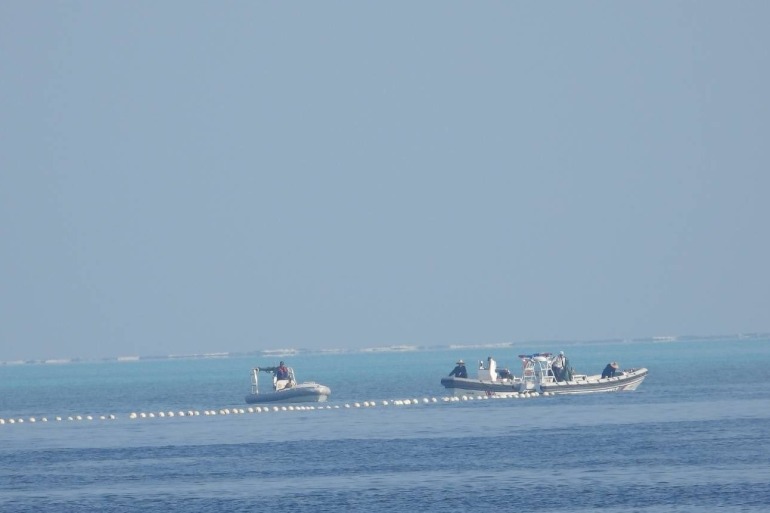In a dramatic escalation of tensions in the South China Sea, the Philippines has vehemently condemned China’s installation of what it describes as a “floating barrier” within its Exclusive Economic Zone (EEZ). Images circulating on social media reveal a line of buoys placed by China, effectively blocking Philippine fishing boats from entering the contested waters. This latest development in the longstanding territorial dispute between the two nations has raised concerns about maritime rights and livelihoods.
Tensions Escalate in South China Sea
The installation of the barrier in the Scarborough Shoal, locally known as Bajo de Masinloc, has intensified hostilities in an already contentious region. The Philippines alleges that the Chinese coastguard is responsible for the barrier’s placement, accusing them of depriving Filipino fishermen of their rights and livelihood activities within their EEZ.
The situation escalated when Philippine fishing boats attempted to access the area, prompting a series of 15 radio challenges from four Chinese coastguard vessels. These challenges were perceived as attempts to intimidate and drive away the Filipino vessels, further exacerbating tensions.
International Maritime Law vs. Territorial Claims
The Philippines asserts that the Scarborough Shoal falls well within its 200-nautical-mile EEZ, a delineation recognized by international maritime law and reaffirmed by a ruling from The Hague’s International Court of Arbitration. However, Beijing disputes this claim and considers the area as part of its own territory, referring to it as Huangyan Island.
This fundamental disagreement over territorial jurisdiction has been a persistent source of conflict between the two nations. It underscores the broader issue of competing territorial claims in the South China Sea, where multiple countries assert sovereignty over various islands and features.
Call for Diplomacy Amidst Rising Disputes
Amidst these escalating disputes, calls for diplomacy and peaceful resolution have become increasingly urgent. The Philippine coastguard has pledged to collaborate closely with relevant government agencies to address these challenges and safeguard the nation’s maritime rights and domains. Diplomatic channels are seen as vital in finding a lasting solution to the South China Sea dispute, as tensions continue to rise with recent incidents involving water cannon fire and dangerous boat maneuvers.
While the Philippines has openly condemned China’s actions, the response from Beijing remains awaited. The international community is closely monitoring the situation, with hopes for a peaceful resolution that respects international law and maritime rights.
As the standoff persists in the South China Sea, it remains to be seen how both nations will navigate the complex web of territorial claims, international law, and regional stability. The Philippines’ strong condemnation of the ‘floating barrier’ underscores the pressing need for diplomatic dialogue to address the issues at hand and prevent further escalation in this volatile region.















